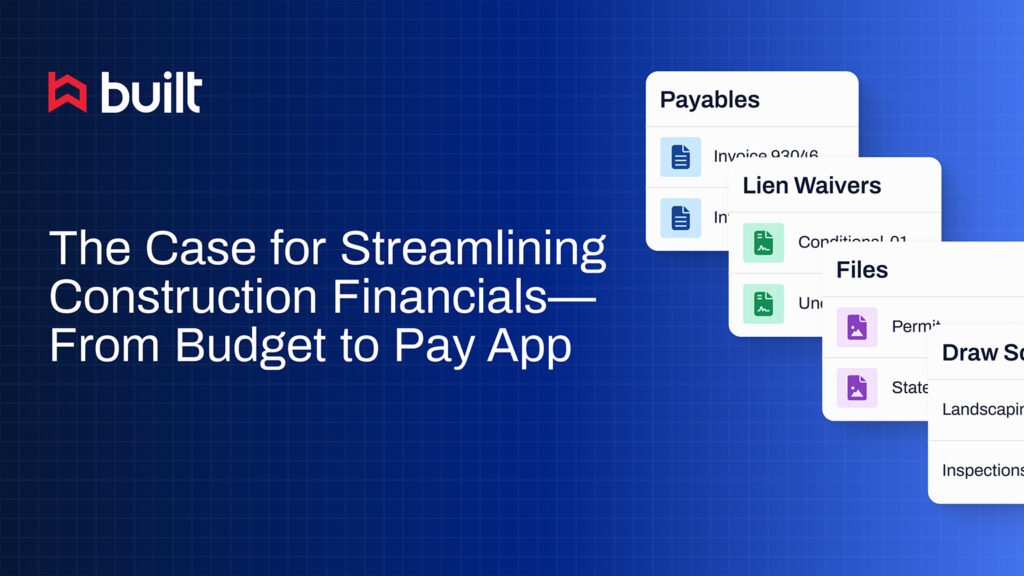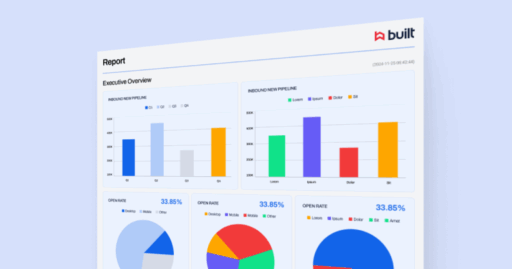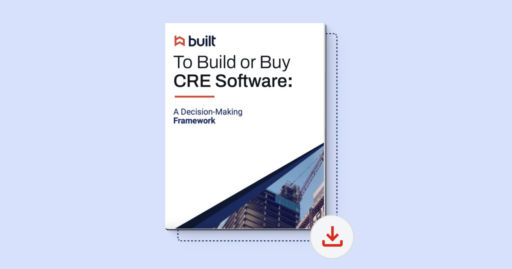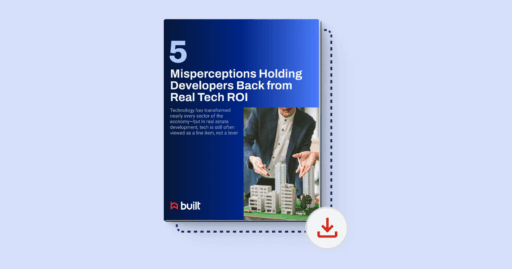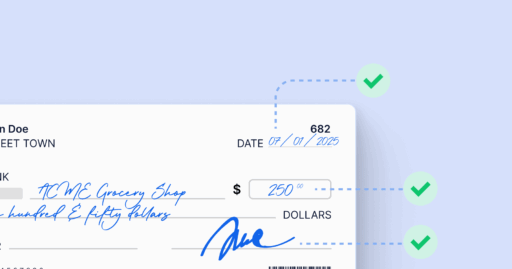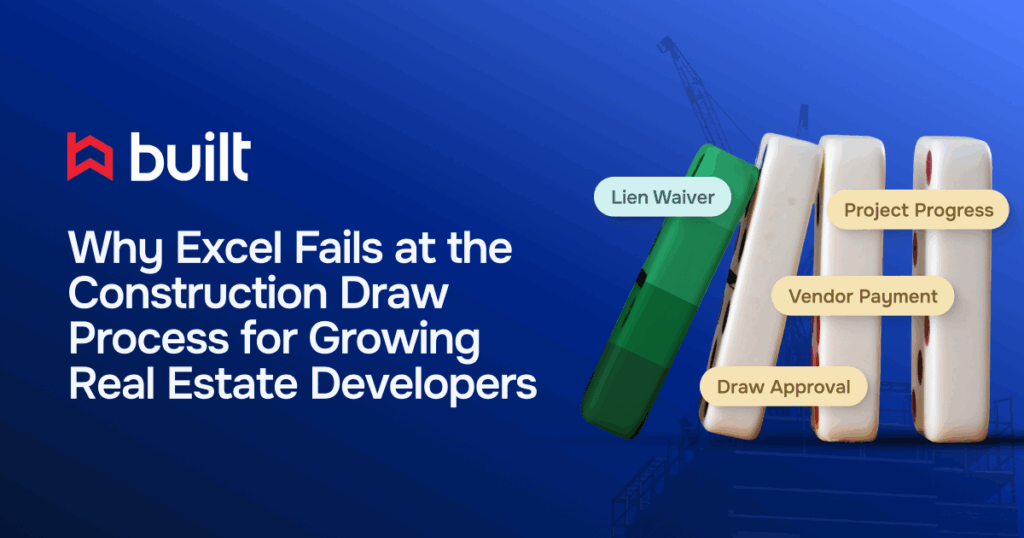
Construction Draw Software: The Developer’s Guide to Scaling Beyond Spreadsheets


Capital powers construction. But the way capital moves through projects hasn’t kept pace with how modern real estate teams operate. For owner–developers managing multiple active builds, disjointed draw processes distributed across spreadsheets, inboxes, and legacy tools create delays, confusion, and risk when precision matters most.
Construction draw management software solves this problem by aligning funding workflows with how projects actually run. It replaces manual systems with structured, scalable processes so developers can move faster, stay audit-ready, and make smarter decisions across every build in their portfolio.
By reducing manual coordination and centralizing documentation, these platforms help teams save time, improve collaboration, and maintain transparency across every stakeholder while maintaining full control over how capital flows.
This guide breaks down draw management software, including how it works and why purpose-built tools are becoming essential for developer teams scaling beyond early growth. If you’re dealing with delays, budget uncertainty, or inconsistent documentation, here’s how to get ahead and stay ahead.
What Is Construction Draw Management Software?
Construction draw management software is purpose-built technology that centralizes and streamlines the process of submitting, reviewing, approving, and funding draw requests throughout the construction lifecycle.
For developers and owner–operators managing multiple projects or complex capital stacks, it replaces outdated tools like spreadsheets, email threads, and physical documents with a single system of record designed for speed, clarity, and compliance.
A typical draw request includes line-item detail, documentation of completed work, invoices, and proof of progress. Software platforms structure this submission flow and keep each step visible, auditable, and easy to track.
At its core, draw management software enables capital to move faster and more transparently. It reduces delays, enforces budget controls, and improves collaboration among borrowers, lenders, inspectors, and internal stakeholders by aligning everyone around shared data and structured communication.
How It’s Different from Generic PM Tools
Tools like Procore, Excel, or legacy accounting systems weren’t designed to handle the nuanced workflows tied to capital movement. While they may help track project progress or budgets, they fall short in a few critical ways:
- No built-in draw lifecycle logic: Generic tools can’t automate the draw approval path from submission to disbursement.
- Fragmented documentation: Manual uploads and spreadsheets lead to missing lien waivers, unverified invoices, and compliance risks.
- Lack of financial control: These tools don’t enforce funding thresholds, retainage rules, or lender-specific draw criteria.
- Limited portfolio oversight: They often lack roll-up reporting for visibility across dozens or hundreds of active builds.
And it’s not just anecdotal. A recent U.S.–focused Deloitte / Autodesk survey found 80% of construction firms acknowledged room to improve their data capabilities, with just 18% achieving daily actionable insights from project data .
Construction draw management software creates a consistent, repeatable process for how capital flows through a project. But adopting that kind of structure means moving beyond the tools that got you through early-stage growth. And for most owner–developer teams, that means confronting a familiar culprit: the spreadsheet.
Draw Management in Multi-Source Capital Stacks
As real estate deals become more complex, capital rarely comes from a single source. Developers now routinely structure projects with combinations of senior debt, mezzanine financing, preferred equity, and other private capital, each with its own disbursement logic, risk tolerance, and compliance requirements.
This layering introduces a new level of complexity into the draw process. Each funding partner may require distinct documentation, have different thresholds for release, or follow unique approval hierarchies. When those expectations aren’t clearly mapped to a unified draw structure, delays and discrepancies follow.
Misaligned disbursement rules don’t just slow down payments, they also create exposure. Funds may be released in ways that violate lender agreements, and they may overfund against incomplete work or bypass critical review gates. Without a system built to reflect these variations, developers end up managing parallel processes that invite error and erode trust.
That’s why centralized draw management is so essential. Purpose-built software enables developers to encode the specific rules of each funding source, routing requests through the right stakeholders, validating against individualized criteria, and maintaining compliance documentation that satisfies every layer of the capital stack.
For growing firms managing multiple active deals, this flexibility is non-negotiable. A system that can adapt to each financing structure without manual rework or risk of inconsistency becomes the foundation for both speed and control.
Why Spreadsheets Break Down Across Projects
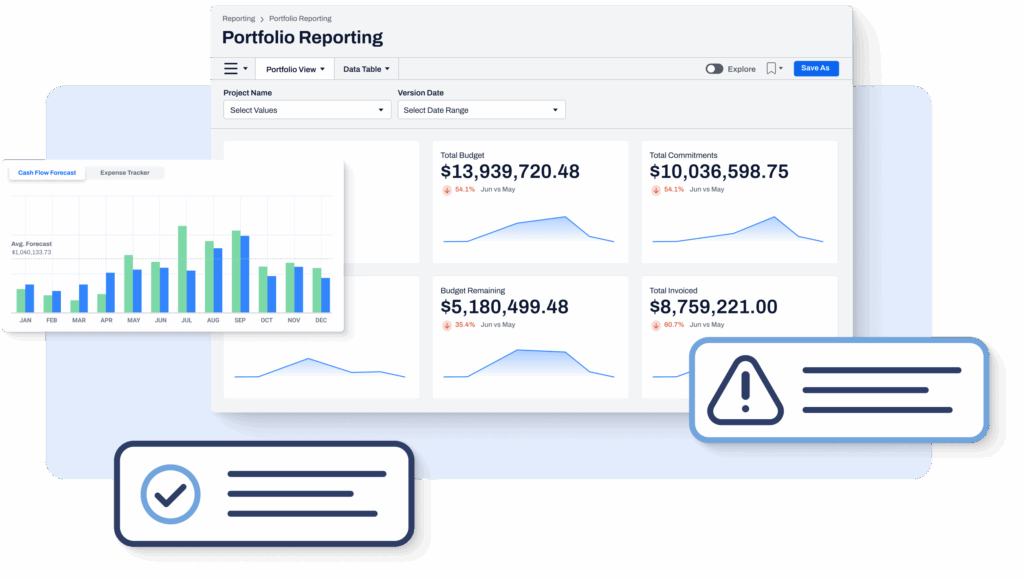
Spreadsheets might work for a single construction loan or a tightly managed budget, but they don’t scale when you’re managing multiple projects, funding sources, and stakeholders. What starts as a stopgap quickly becomes a liability.
Real estate developers often describe the same friction: version mismatches; last-minute budget changes lost in email threads; and the scramble to assemble documentation when a lender, auditor, or capital partner asks for an update. Even internally, different team members might use different templates or file naming conventions, making it harder to track progress or ensure consistency.
The problem isn’t just inefficiency; it’s risk. Without standardization, there’s no way to enforce internal controls, flag anomalies in real time, or ensure clean handoffs across teams. One miskeyed formula or outdated draw log can lead to funding delays, overdrawn budgets, or failed audits, especially when teams are trying to reconcile loan draws or prepare accurate audit trails across multiple builds.
As your portfolio grows, spreadsheets introduce more variability, not less. What you need is a system that aligns your capital flow with your operational reality, built to handle real-time complexity, not static files.
The Construction Draw Process, Digitized

With manual tools off the table, the next step is a structured, digital approach that reflects how construction capital really moves.
Construction draws don’t just move money; they move projects forward. But that movement depends on aligning multiple players across different systems, timelines, and responsibilities. Digitizing the draw process means replacing fragmented steps with a unified, role-specific workflow that reflects how capital actually flows through a build.
The construction draw schedule should align with project milestones or completion percentages to accurately reflect when funds are needed.
A modern draw platform structures the process into four distinct, auditable phases:
1. Draw Request
Developers, borrowers, or project owners submit a draw directly within a secure digital portal, backed by documentation, pay applications, and line-item context. Role-based access ensures requests only come from authorized parties and that they’re automatically logged with date, status, and history attached.
2. Validation
Inspections, lien waivers, and backup docs are validated against current progress and funding thresholds without leaving the platform. Teams gain confidence that each request is supported by verified information, not buried attachments.
3. Approval
Internal and external stakeholders follow a structured approval path. Whether it’s one approver or multiple layers (loan admin, loan officer, construction manager, compliance), approvals route automatically based on deal type, amount, or role. There’s no back and forth.
4. Funding
Once approved, the system pushes disbursement instructions to the right parties, reducing handoffs and accelerating payments. Integrations with accounting and banking systems eliminate duplicate entry and provide a full audit trail for every dollar moved.
For owner–developer teams managing multiple active projects, this kind of structure isn’t just about control; it’s about momentum. Speed, clarity, and accountability come baked into every draw, keeping builds on track and stakeholders aligned from day one.
What a Scalable Draw Schedule Looks Like
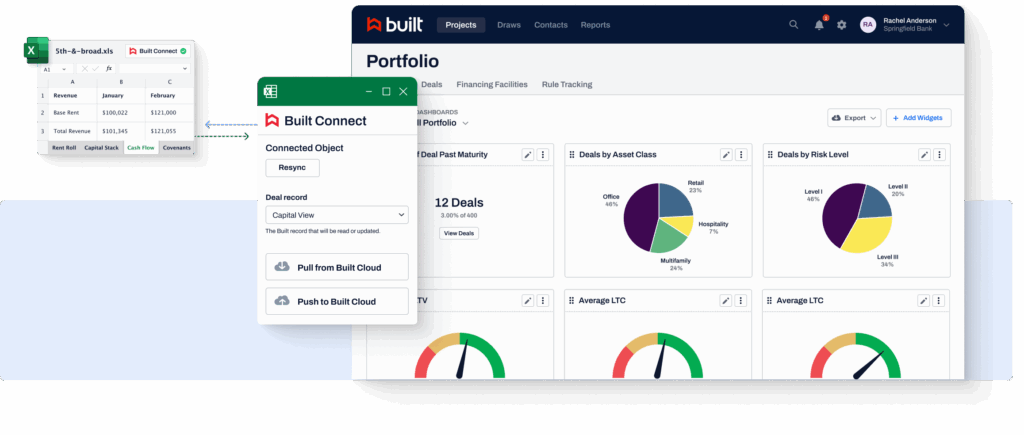
Once your draw workflows are standardized, the next challenge is maintaining visibility across the portfolio. A scalable draw schedule isn’t just a timeline. It’s a dynamic coordination system. It aligns construction progress, capital pacing, and risk signals across every active project, letting you zoom out while keeping control at the line-item level.
At scale, draw schedules help enforce discipline: payments are tied to real progress, and capital moves according to defined milestones, not gut feelings or back-and-forth emails.
In practice, this means being able to do the following:
- Spot projects that are outpacing funding or vice versa
- Flag overfunded builds before they become exposure issues
- Balance draw timing against seasonal constraints, resource availability, or lending cycles
- Identify delays or stalled builds not just by calendar but also by performance against plan
- Use detailed cost breakdowns to ensure payments align with actual progress
These aren’t things a spreadsheet can catch. A scalable schedule surfaces them in real time, so you’re never reacting after the fact.
Some developers embed draw timing directly into their portfolio planning, using historical funding patterns and construction pacing to inform how and when requests are released across builds. Larger portfolios often require more granular schedules that are flexible enough to reflect the unique financial rhythms of each project but structured enough to drive accountability at scale.
Replacing Manual Approvals and Pay Apps
Coordinating funding is one challenge; documenting and verifying the details behind every disbursement is another. In many cases, pay applications, lien waivers, and supporting invoices still move through inboxes and shared drives, often with unclear versioning, missing signatures, or approvals stuck in limbo.
For developers overseeing multiple builds, that kind of manual routing creates blind spots. Delays in processing a single lien waiver can hold up a draw. Pay apps submitted in non-standard formats add review time.
And compliance checks that depend on tribal knowledge or last-minute document hunts don’t hold up to scrutiny when capital partners or auditors come calling.
Digitizing this layer means replacing loosely managed handoffs with structured document collection, pre-configured approval paths, and real-time validation. Roles are clearly defined, supporting documents are tracked automatically, and everything routes through a system that maintains continuity, even when project complexity increases.
The draw schedule should incorporate provisions for issues like retainage, which is withheld until project completion to ensure quality.
Some teams start by mapping pain points using tools like a pay app and lien waiver tracker to assess where friction builds. Others go deeper into how automated documentation workflows reduce risk and sync funding, billing, and approvals into a single system of record.
Controlling Budget Changes and Draw-Linked Risk
Construction budgets are dynamic by nature. Line items shift, contingencies are tapped, and change orders surface mid-project, often under tight timelines. These adjustments aren’t outliers. They’re standard operating reality for developers managing complex builds.
The challenge? Capturing those shifts in real time, across both hard and soft costs. Permits, site prep, design changes: if they aren’t logged consistently, funding flows can quickly fall out of sync with actual exposure.
Most issues stem from disconnects between financial oversight and field execution. Budgets may be updated in spreadsheets or routed through offline approvals, but if those updates don’t feed directly into the systems that govern draw releases, capital moves without context.
That’s where risk creeps in: funds released against outdated numbers, delayed recognition of overages, and missed chances to course-correct.
Draw-linked budget control means tying disbursements to real progress and verified updates, not assumptions. It’s how developers protect margins, uphold accountability, and make confident portfolio decisions.
Signs You’re Losing Budget Control
- Contingencies are drained with no centralized log of usage or rationale
- Draws reflect outdated budget versions or unapproved reallocations
- Change orders are approved late or, worse, funded before approval
- There’s no unified view of exposure across active projects
Why Draw-Linked Budget Oversight Matters
A connected draw platform brings these moving parts together. Every budget adjustment, whether it’s a scope change, a line-item reallocation, or a new contingency request, is tracked within the same environment where draw requests are created and approved.
That means the following:
- Budget shifts are surfaced in context, not in hindsight. Project owners, contractors, and lenders must work closely to ensure all budget adjustments are properly tracked and approved.
- Approval routing happens with controls already in place
- Funding aligns with the latest financial position, not a static baseline
How Developers Are Operationalizing Budget Discipline
Many owner–developer teams start by mapping pain points using a budget contingency tracker. From there, they evolve toward systems that expose real-time shifts in cost structure and tie every draw release to up-to-date financials and pre-set approval logic.
What Lenders and Auditors Expect from Developers
Draw requests don’t just move money. They signal credibility. For lenders, fund administrators, and auditors, every draw submission is a window into how a project is managed, and expectations are only rising.
Capital partners increasingly require consistent, time-stamped documentation that shows exactly what work was completed, when, and how it aligns with the approved budget. Retroactive adjustments, missing backup, and vague line-item changes raise red flags, and often delay funding.
From the lender’s perspective, friction usually stems from the following:
- Disorganized or partial documentation
- Budget revisions that lack rationale or audit trails
- Draw packages that don’t follow a consistent format
- Late-stage requests to backfill gaps in compliance
These issues aren’t just annoying; they’re operational risks. That’s why more capital providers now require structured draw schedules and digital approval logs as part of their underwriting criteria.
Purpose-built software helps developers meet those expectations head-on. It standardizes how information is submitted, ensures every update is logged in context, and generates audit-ready records automatically. When draws follow predictable patterns, approvals move faster, and trust deepens across the capital stack.
For developers scaling their portfolios or working with institutional partners, this kind of process maturity is a competitive advantage. It doesn’t just help secure funding, it protects it.
Gaining Full Project Visibility
As development teams take on more volume, the challenge shifts from managing individual projects to understanding the full shape of a portfolio in motion. It’s no longer just about what’s funded or approved. Now, it’s about what’s lagging, what’s stalled, and what’s trending off-plan.
Project managers rely on real-time dashboards to monitor project health and identify potential issues early.
That requires a different kind of visibility: one built around signal detection, not just task completion.
What the Most Effective Teams Monitor
High-performing owner–developer teams track construction progress not by static timelines, but by key health indicators embedded in their dashboards, including the following:
- Stale Loans: Projects that haven’t advanced in draw or inspection activity within a defined window
- Overdrawn Projects: Builds where capital outflows have exceeded verified construction progress
- Low Pacing Metrics: Projects falling behind planned timelines based on percentage complete vs. time elapsed
- Past Maturity Flags: Loans approaching or exceeding contractual maturity dates without closeout
- Payment Schedules: Monitoring payment schedules to ensure timely disbursements and maintain project cash flow
These indicators give teams a clearer picture of which projects are healthy, which need attention, and which need proactive action to prevent delays or cost overruns.
Why Static Reporting Falls Short
Conventional reporting often lacks the context or frequency to catch issues early. By the time a monthly update flags a risk, the window to intervene may have closed. Even the best spreadsheets or emailed reports can’t replicate the real-time value of a live dashboard built on active project data.
From Construction Start to Final Stabilization
For developers building to hold or managing multiple capital sources, visibility must extend beyond the draw itself. Full-cycle dashboards help teams track projects from initial funding to lease-up, disposition, or refinance, tying each phase back to financial performance and delivery timelines.
Teams exploring this approach often begin by evaluating their existing blind spots using a project tracking template, then they look at how lifecycle dashboards and pre-close-to-stabilization tools can unify every stage of the process.
Get Started with Smarter Draw Management
If your draw process still depends on disconnected systems or improvisation, now’s the time to rethink what’s possible. Modern development teams move capital faster and with more confidence and control.
Whether you’re managing two projects or two hundred, the shift to a structured, connected draw process can save time, improve team alignment, and reduce risk across the board.
Start by asking a few critical questions:
- Are your draw approvals and funding timelines consistent?
- Can you track draw progress and budget shifts across every project?
- Is your documentation process audit-ready at any given time?
- Do you have a single view of risk signals across your portfolio?
If the answer to any of these is “not really,” you’re not alone, and there’s a better way forward.
See how owner–developer teams are evaluating their options in this comparison of draw management platforms, and explore how a connected approach can streamline your workflows, improve capital performance, and reduce project risk from day one.
Construction Draw Management Software FAQs
What’s the difference between construction draw software and project management tools?
Project management tools are great for coordinating tasks, documents, and timelines, but they weren’t designed to manage capital. Construction draw software automates the full draw process, from draw request to disbursement, enforcing financial controls, validating documentation, and ensuring compliance with each loan agreement.
Unlike generic tools, draw platforms include logic specific to the construction draw schedule, making it easier to track work completed, release funds based on project milestones, and maintain audit-ready records. A schedule of values (SOV), often used to map out construction activities, is key to structuring a compliant and transparent payment schedule.
Can we set different approval workflows for different loan types or partners?
Yes. Construction loan management software lets you configure approval logic by lending institution, third-party lender, or deal type, so whether you’re working with a loan officer, a general contractor, or multiple funding sources, each request process aligns with project-specific terms and milestones. This ensures financial management across complex construction financing structures stays compliant and efficient.
How does the system handle retainage and funding thresholds?
Built-in logic supports retainage rules, disbursement limits, and construction loan draw pacing tied to construction progress. Whether it’s holding back a portion of payment until final inspection or syncing with industry standards for phased funding, the platform automates enforcement, removing manual tasks and improving financial control.
What documentation gets tracked in the draw process?
Each draw request includes pay apps, lien releases, invoices, and inspection reports, all time-stamped and stored for visibility. That means when third-party inspectors or auditors ask for a paper trail, your entire review process is centralized and easy to share. This also improves communication tools and data sharing across stakeholders.
Can I see draw performance across all active projects?
Yes. Real-time dashboards show project status, cash flow, and flagged risks, so project managers and project owners alike can track progress payments, spot potential budget overruns, and keep the entire project moving forward. It’s built for visibility across both small and larger projects.
How quickly can we get up and running with draw software?
Most teams begin with a handful of construction projects and expand portfolio-wide. With standardized intake forms, pre-configured logic, and integrations with financial systems, onboarding is fast, and it won’t disrupt your construction process or slow project delivery. Whether you’re tracking soft costs, site development, or materials like garage doors and exterior doors, everything syncs in one system.

Mark Murphy leads OGC Sales at Built, where he is responsible for accelerating adoption of payments and standalone solutions purpose-built for real estate owners, developers, and general contractors. He brings deep experience across sales, general management, and operations in technology-driven businesses.
Prior to joining Built, Mark served as General Manager at Apex Service Partners and Operating Executive at Alpine Investors. He also spent over six years at Flexport, where he held multiple leadership roles including General Manager for the South and Northeast regions, and Director & Acting General Manager for San Francisco and Northern California. Earlier in his career, Mark was Chief Operating Officer at Oolong, an INC 500-recognized international trading business.
Mark holds a degree in Mechanical Engineering from Stanford University, where he captained the Varsity Men’s Rowing team.
Related Posts

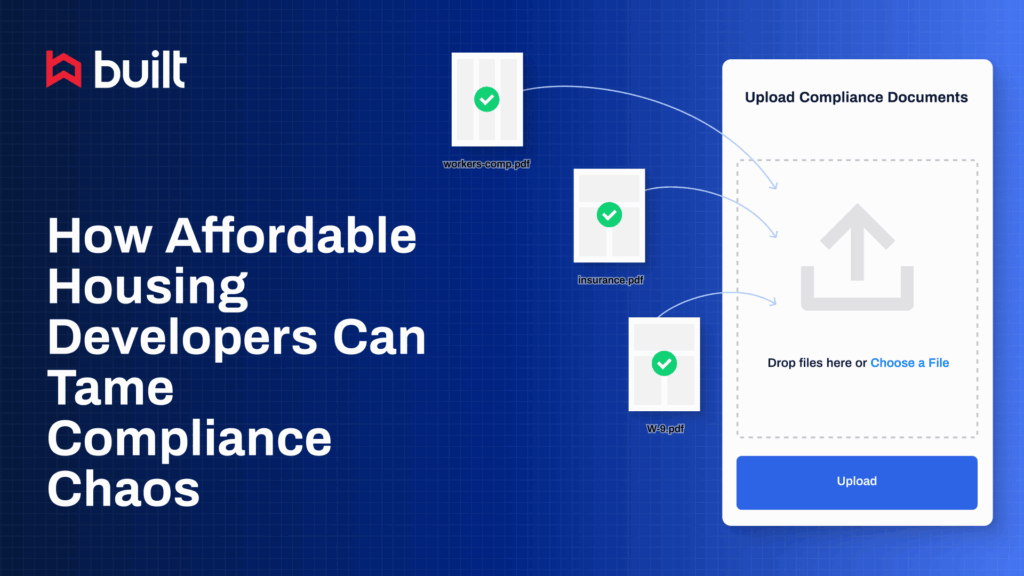
How Affordable Housing Developers Can Tame Compliance Chaos
